Andrew Wong took over the family restaurant Kyms, near Victoria station, back in December 2012. He has developed a modern style of Chinese cooking, a long way from the standard fare that you find in Chinatown. This applies both to dinner and to the dim sum at lunchtime, with many traditional dishes given a modern twist. There was a tasting menu at £108, and a la carte menu as well as a separate dim sum menu at lunch.
The wine list had 62 labels and ranged in price from £40 to £350, with a median price of £89 and an average markup to retail price of 2.8, which is quite fair by London standards. Half the list was French, with selections from Greece, Chile and England as well as the usual wine growing stalwarts. Sample references were Loureira Aphros 2018 at £44 for a bottle that you can find in the high street for £14, Bertrand Cigalus Blanc 2018 at £74 compared to its retail price of £30, and Marsannay Clos du Roy Domaine Jean Fournier2016 at £98 for a wine that will set you back £37 in the high street. For those with the means there was Marc Morey Chassagne Montrachet Les Chevenottes 2017 at £150 compared to its retail price of £73, and Krug NV champagne at £350 for a wine whose current market value is £180.
Terraced seating was covered with a canopy and came complete with a lamp heater, which was necessary on this unusually cool late August day. This terrace is a useful feature in these pandemic times, and staff wear masks in the restaurant. At this lunch we tried a number of different dim sum, which you can order by the individual piece, so no-one has to fight over the last dumpling on the plate.
Aerated sesame dumpling was hollow inside with a gooey filling, the somewhat glutinous texture of the bun enhanced by the sesame seeds. Traditionally this is filled with sweet bean paste, but this was served with a plain sauce (14/20). Xiao long bao buns are a classic dish in Shanghai, made with pork and a sauce solidified with gelatin that melts when heated, producing a liquid centre when served that bursts on to the tongue when you bite into it. Here they sheet the dumpling dough repeatedly fifty times to create an elastic dough that is able to hold the soup without breaking. Instead of serving this dish with a traditional dip of red vinegar, vinegar is injected into the dumpling so that you get the optimal amount (15/20).
Rabbit and carrot glutinous puff looks like a carrot when served but is actually a glutinous rice flour dumpling filled with rabbit meat and carrots, the flavour of the two elements combining nicely (15/20). Har gau was described here as clear shrimp dumpling, where the pastry is made from a combination of wheat starch, potato starch and tapioca starch (traditionally it is made with a combination of just the first two starches) served with a dot of sweet chilli sauce and a foam made from Chinese white rice vinegar. It was good, though the prawn filling had just a touch more firmness than perhaps it might have done (14/20). Crispy prawn roll was served with a lettuce leaf and coriander garnish, the former to be wrapped around the roll, so when you bite into it there is a contrast of textures and tastes (15/20).
Scallop and prawn roll pork cheung fun was very different from a traditional cheung fun. Here there were very thin crisp layers enclosing the pork pieces and the scallop cheung fun, effectively transforming the dish into a sandwich. Layers of Cantonese char sui were marinated in Chinese rose infused wine and a combination of dried aromas. After cooking it is steeped in a sugar syrup to achieve a part ham and part roasted meat consistency. This is then layered with seared scallops from the Isle of Skye, cheung fun sheets and filo pastry. The dipping sauce is made from fermented chilli beans, chilli and wasabi tobiko. This was the star dish of the meal, the contrast of textures making this an unusual and highly enjoyable dish (16/20). It was so good that we ordered another round of these.
Pork and prawn dumpling with a thin layer of crackling came with plum sauce and a garnish of truffle. The skin was made in a two-day process used to create traditional Cantonese barbecued pork belly. The skin is removed and then a prawn paste is added on the bottom along with toasted sesame seeds, topped with the very last Australian truffles of the season. The crackling was pleasingly thin and delicate, the plum sauce enlivening the dumpling (15/20).
“Memory of Peking duck” roll featured duck, foie gras and Spanish oscietra caviar (supplied from Kings Caviar in west London) wrapped in a roll. The duck was marinated with Peking duck spices, cucumber, spring onion and caviar, all smoked lightly in cherry wood. The result was excellent filling, though the roll seemed just a touch thick to me (14/20).
Sichuan chicken and peanut bonbon came with a little pipette to inject Sichuan sauce into the bun. This worked well, the sauce not too spicy, and the peanut flavour not overwhelming the chicken (15/20). A slightly sweet steamed duck yolk custard is a classical dim sum, but here the inside is a lot wetter, the idea being that the liquid really does live up to its Chinese name of 'runny sand bun'. The bun was nicely made, with soft, fluffy texture and was not overly sweet (15/20).
Finally, coconut granita came with a double boiled “bird nest”, lemon zest, mixed berries including poached mulberries from western China, blackberries cooked in star anise, set yoghurt and coconut ice. This was a refreshing end to the meal, the lemon zest bringing just the right level of acidity (15/20). An elaborate red box contained a trio of petit fours. In the shape of a mah-jong tile was white chocolate with a raspberry sorbet inside with some dark chocolate to finish, the frozen sorbet centre melting as you bite into the tile. Dragon eye fruit biscuit was just that, and the final petit four was yuzu chocolate with pink peppercorns, which worked nicely.
The bill came to £78 per person with just tea to drink, so it can be seen that the bill can creep up on you if you are as greedy as I was at this meal. At dinner, sharing a modest bottle of wine, a typical cost per person might be £85. The cooking at A. Wong is classy and there is no other dim sum in London quite like this.
Further reviews: 08th Mar 2018 | 06th Nov 2017 | 17th May 2017 | 26th Jan 2016 | 25th Feb 2014 | 16th Sep 2013 | 23rd Jul 2013















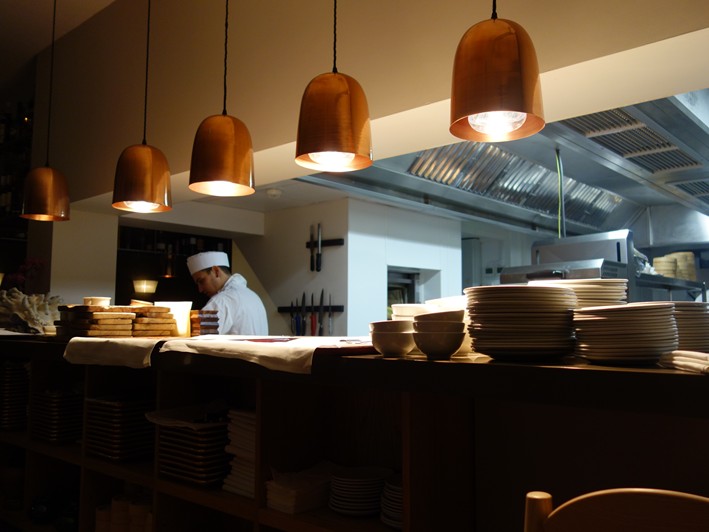



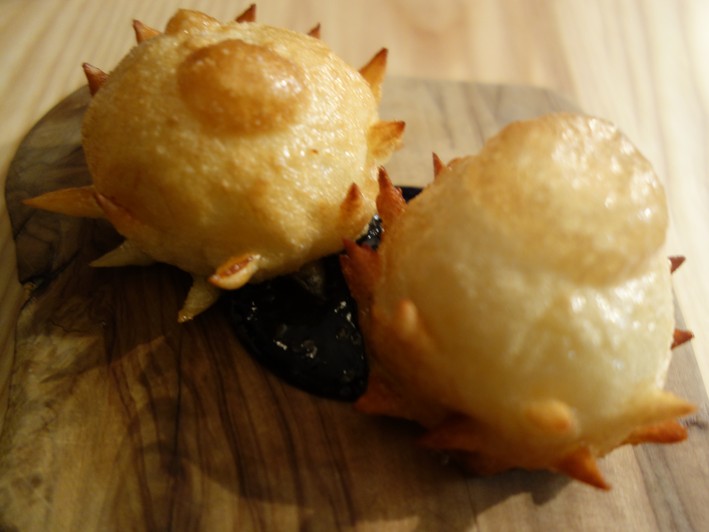

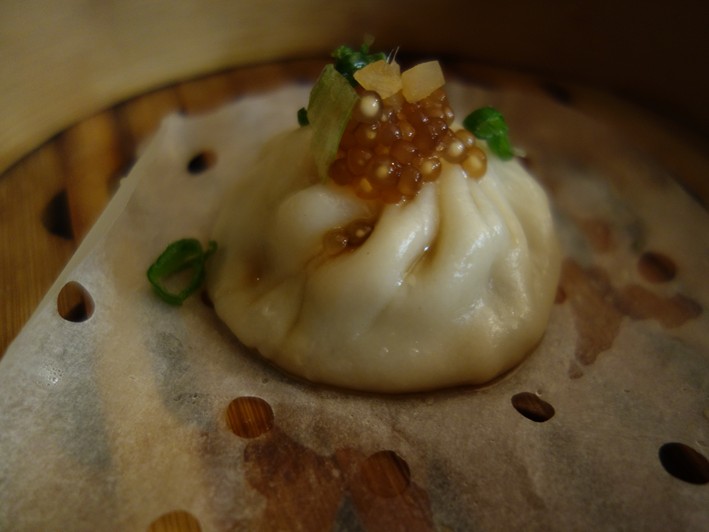
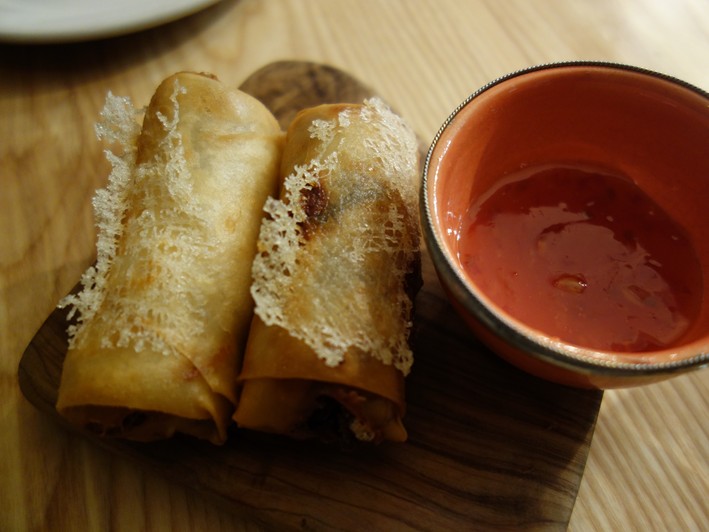
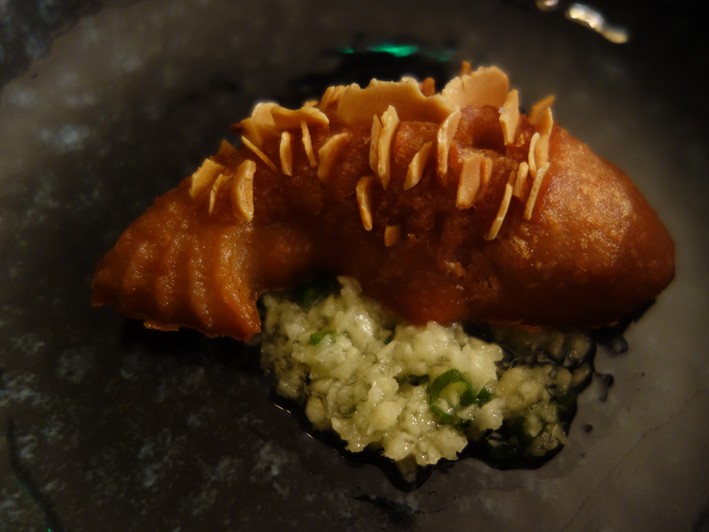
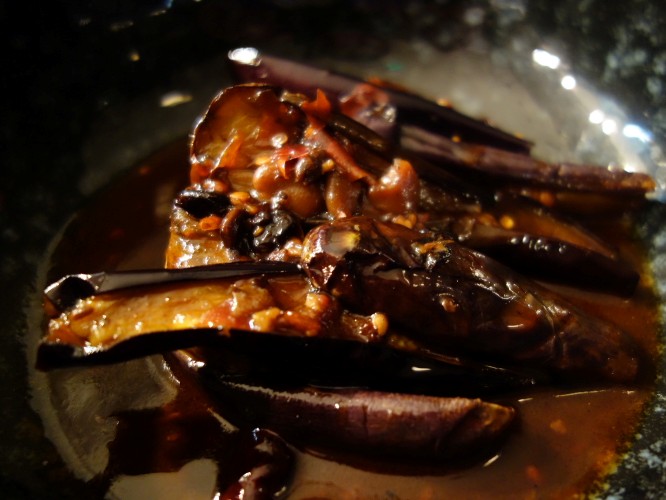



Add a comment
Thank you for submitting your comment, this will be checked and added to the website very soon.
User comments